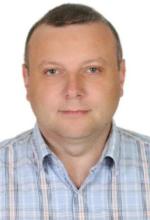Biophysics 03 2024
This block introduces physical aspects of the interactions of biological molecules and some cellular processes. It will also provide understanding how composition determines the structure and properties of proteins, DNA, and RNA and membranes. Practical classes will be focused on design of peptides and oligonucleotides with desirable properties, skills to use specialized software and web services, investigation of mechanisms of biological processes with special attention to the issues that arise in drug development.
Reversible and irreversible processes. Laws of Thermodynamics. Heat and reaction enthalpy. Entropy. ΔG. Nernst equation. Hess law. Equilibrium constants. Determining Kd and stoichiometry of protein interactions.
First-order reactions. Two-stage reactions. Reversible reaction rates and equilibrium constants. Second order reaction. Kinetics in complex systems. Basics of kinetic modeling. Modeling of epidemics development. Catalysis. Kinetics of fermentative reactions. Inhibition. Kinetics in studies of reaction mechanisms.
Covalent, hydrogen, ionic bonds. Individual molecules and biopolymers. Diffusion and size of molecules. Primary, secondary, ternary structure of proteins. Disulfide bonds. Relationship between amino acid sequence and secondary structure. CD spectroscopy.
Complementarity. Helix. Hairpins. tRNA. Annealing. UV absorbance to monitor dsDNS-ssDNA transition. Atypical conformations. Viral and non-coding RNA. RNAzymes. Software for protein and DNA structure visualization.
Lipid bilayer. Model membranes. Membrane phase. Structure and composition of cell membrane. Proteins and membranes. Membrane permeability. Membrane asymmetry. Transmembrane potential. Channels.
ATP-synthase. Bacterial flagella. Tubulin microtubules. Kinesin and dynein. Actin microfilaments and myosin.
Конструювання пептидів. Структура ДНК. РНК шпильки. Онлайн калькулятори властивостей пептидів та олігонуклеотидів. Ліпіди і мембрани.
Термодинаміка
David G. Nicholls, Stuart J. Ferguson Bioenergetics https://Booksite.Elsevier.Com/9780123884251/ розділ 3
Кінетика
Dagmar Klostermeier, Markus G. Rudolph Biophysical Chemistry ISBN 9781482252248 (e-book) / розділ 2
Структура протеїнів
Dagmar Klostermeier, Markus G. Rudolph Biophysical Chemistry ISBN 9781482252248 (e-book) / розділ 16
Структура ДНК та РНК
Dagmar Klostermeier, Markus G. Rudolph Biophysical Chemistry ISBN 9781482252248 (e-book) / розділ 17
Мембрани та біоенергетика
David G. Nicholls, Stuart J. Ferguson Bioenergetics https://Booksite.Elsevier.Com/9780123884251/ розділ 2 (іонний транспорт крізь мембрани)




